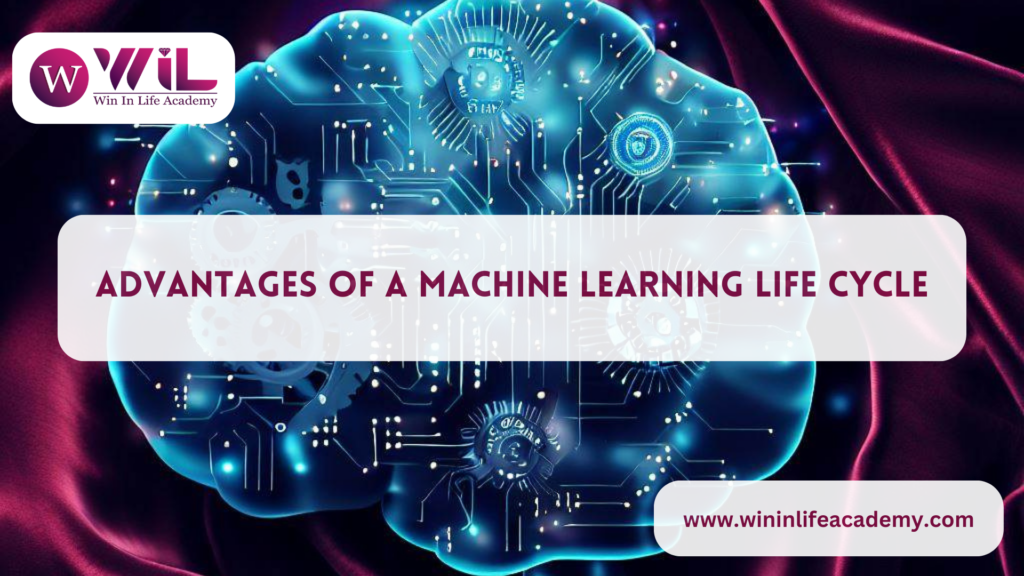Machine learning is a field of artificial intelligence that focuses on developing algorithms and models capable of learning from data and making predictions or taking actions without explicit programming. The steps in machine learning life cycle involve training models on labelled data to recognize patterns and relationships, enabling them to generalize and make predictions on new, unseen data. It has the potential to uncover insights and improve decision-making, driving innovation in numerous industries. In this blog post, we will delve into the machine learning life cycle and explore its key phases, from data collection to model deployment. As you read our last blog on confusion matrix in machine learning, this blog will also help you to read between the lines.
Machine learning life cycle
Machine learning has revolutionized various industries, from healthcare to finance, by enabling powerful data-driven insights and predictions. Behind the scenes of these remarkable accomplishments lies a systematic process known as the life cycle of machine learning model. This iterative journey, covering several distinct stages, guides data scientists and engineers in developing robust and accurate machine learning models. The following steps explain machine learning life cycle in detail.
- Data Collection and Preparation: The first step in the machine learning life cycle is gathering relevant data. This may involve accessing existing datasets, acquiring data from various sources, or generating new data through experiments or simulations. Once the data is collected, it needs to be pre-processed and cleaned. This involves handling missing values, removing outliers, normalizing data, and converting categorical variables into numerical representations. Proper data preparation lays the foundation for accurate model training.
- Feature Engineering and Selection: Feature engineering involves transforming raw data into meaningful features that capture important characteristics for model training. This step may include dimensionality reduction techniques, such as principal component analysis (PCA), to reduce the number of features without significant loss of information. Feature selection techniques, such as backward elimination or L1 regularization, help identify the most relevant features and discard irrelevant ones. Effective feature engineering and selection can greatly enhance model performance.
- Model Training and Evaluation: With the prepared data and selected features, the next phase involves training is the third life cycle of machine learning project. Various algorithms, such as linear regression, decision trees, support vector machines, or deep neural networks, can be employed based on the nature of the problem and the available data. The focus of the training is to make the model learn the hidden patterns and relationships in the data. The trained model is then evaluated using appropriate evaluation metrics, such as accuracy, precision, recall, or mean squared error, to assess its performance and identify areas for improvement.
- Model Tuning and Optimization: No model is perfect from the start, and this is where model tuning and optimization come into play. By adjusting hyperparameters, such as learning rates, regularization strengths, or tree depths, data scientists fine-tune the model to achieve optimal performance. This process often involves conducting experiments with different configurations and comparing the results to identify the best settings. Techniques like cross-validation and grid search assist in finding the optimal hyperparameters and improving the model’s accuracy and generalization capability.
- Model Validation and Testing: Once the model is fine-tuned, it undergoes validation and testing phases. Validation involves assessing the model’s performance on unseen data from the same distribution as the training data to ensure it generalizes well. Testing, on the other hand, involves evaluating the model’s performance on entirely new and independent data. These steps help detect any overfitting issues and provide an estimate of how well the model will perform in real-world scenarios.
- Model Deployment and Monitoring: After successful validation and testing, it’s time to deploy the model into production. This phase involves integrating the model into the target system, whether it’s a web application, a mobile app, or an automated decision-making process. The deployed model is continuously monitored to track its performance and detect any drift or degradation. Monitoring helps ensure that the model maintains its accuracy and reliability over time, and prompts retraining or updating if necessary.

Throughout the machine learning life cycle, iteration and refinement are common as new insights are gained, and the model’s performance is improved. The steps in machine learning life cycle form an iterative process that requires collaboration between data scientists, domain experts, and stakeholders to achieve the desired outcomes.
Unlock Your Career Potential. Get a Free Counselling. Enroll Now!
Advantages of a machine learning life cycle
The life cycle of machine learning project provides several advantages, enabling a systematic and effective approach to developing and deploying machine learning models. Here are some key advantages:
- Structured Approach: The machine learning life cycle offers a structured framework that guides the project from data collection to model deployment. It ensures that each stage is properly addressed, reducing the chances of overlooking crucial steps and improving the overall quality of the project.
- Data-Driven Decision Making: By following the steps in machine learning life cycle, the project leverages the power of data to drive decision-making. It emphasizes the collection, preparation, and analysis of relevant data, enabling insights and predictions based on empirical evidence rather than assumptions or intuition.
- Iterative Improvement: The life cycle of ML Project is designed to be iterative, allowing for continuous improvement of the model. Each iteration involves evaluating and fine-tuning the model based on feedback and insights gained from the previous stages. This iterative process increases the model’s accuracy and performance over time.
- Scalability and Reproducibility: The steps in machine learning life cycle promotes scalability and reproducibility of the project. By following standardized processes and documenting each step, the project becomes scalable, allowing for easy replication or extension. This is particularly important when dealing with large datasets or when multiple team members are involved.
- Risk Mitigation: The life cycle helps identify and mitigate risks throughout the project. By systematically validating and testing the model, potential issues, such as overfitting, data biases, or model performance degradation, can be identified and addressed early on. This reduces the risk of deploying a flawed or unreliable model.
- Collaboration and Communication: The life cycle of ML project facilitates collaboration and communication among team members. It provides a common language and framework for discussing and sharing progress, challenges, and results. This collaboration promotes a multidisciplinary approach, involving data scientists, domain experts, and stakeholders, leading to more comprehensive and effective solutions.
- Model Monitoring and Maintenance: The life cycle emphasizes the importance of continuously monitoring and maintaining the deployed model. This allows for detecting and addressing issues such as concept drift or changing data patterns, ensuring that the model remains accurate and reliable in real-world scenarios.

By embracing the steps in machine learning life cycle, a project can benefit from a systematic, data-driven, and iterative approach, resulting in improved model performance, reduced risks, and enhanced collaboration and communication. The life cycle of ML project maximizes the potential of machine learning to deliver valuable insights and predictions, contributing to successful and impactful project outcomes.
Conclusion
The machine learning life cycle encompasses a series of well-defined stages, from data collection to model deployment and monitoring. The various steps in machine learning life cycle play a crucial role in the development of accurate and reliable machine learning models. By following this iterative process, data scientists and engineers can maximize the potential of machine learning algorithms and unlock valuable insights from complex datasets. Understanding and effectively implementing the machine learning life cycle is the key to leveraging the power of artificial intelligence and driving innovation.






I eagerly started following this amazing site a couple days ago, they have useful content for subscribers. The site owner works hard to inform fans. I’m delighted and hope they continue providing excellent info.
Very interesting topic, thanks for posting.Money from blog
Techno rozen For the reason that the admin of this site is working, no uncertainty very quickly it will be renowned, due to its quality contents.
Very well presented. Every quote was awesome and thanks for sharing the content. Keep sharing and keep motivating others.